Leaning Tower of Pisa
The Leaning Tower of Pisa may be the world’s greatest spot for a tourist photo, but there’s a lot more to this centuries-old icon than lighthearted images of your friends and family “holding up” the tower. Here’s everything you need to know about Italy’s most beloved architectural accident.
related visit : leaning tower of pisa
1. IT TOOK TWO CENTURIES TO BUILD IT.
Construction on a campanile, or bell tower, to accompany the public cathedral in the Italian riverside city of Pisa broke ground in August 1173. By 1178, workers had made it to the third story of the structure, which was already tilting slightly to the north. Military conflicts with other Italian states would soon halt progress on the tower, which would not resume until 1272. This time, construction only remained underway for 12 years before another war again stopped the work. A final wave of construction picked up again in the early 14th century, concluding with the installation of a bell chamber in 1372.
2. THE TOWER LEANS BECAUSE OF ILL-CONCEIVED DESIGN PLANS.
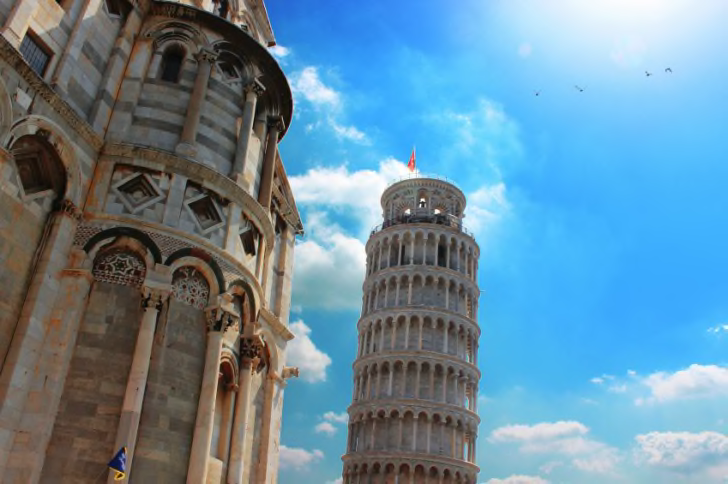
While some architectural follies are the product of unforeseeable bouts of bad luck, the Leaning Tower of Pisa’s signature tilt could have been avoided with better planning. A shallow foundation and the soft ground of Pisa composed of sand, clay, and deposits from the Tuscan rivers Arno and Serchio were too unstable to support the building even in the early stages of its construction. Amazingly, the builders noticed this error early in the two-century construction project after the addition of a second story to the tower, the ground began to give, prompting that infamous slant.
3. AT ONE POINT, THE TOWER’S LEAN SWITCHED DIRECTIONS.
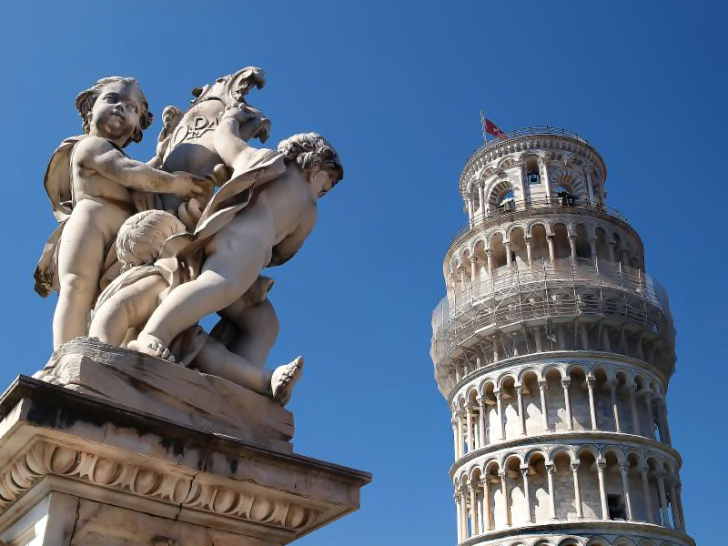
When construction resumed in 1272, the additional developments did not exactly help the tower’s posture. The stacking of additional stories atop the existing three jostled the building’s center of gravity, causing a reversal in the direction of its tilt. As the tower accrued its fourth, fifth, sixth, and seventh stories, the once northward-leaning structure began to tip further and further south.
4. THE LEAN KEPT GETTING PROGRESSIVELY WORSE.
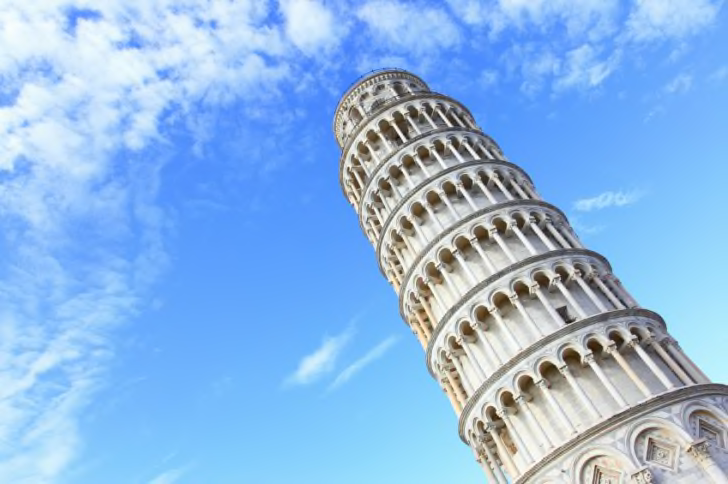
As time passed, the ground only further weakened beneath the tower’s heft. An early 0.2-degree tilt increased gradually over the subsequent centuries, maxing out at 5.5 degrees or with the top 15 feet south of the bottom by 1990. Over the next decade, a team of engineers leveled the soil beneath the tower and introduced anchoring mechanisms in an effort to rectify the landmark’s nearly catastrophic lean. The project allotted the tower a more secure stance, but it did not prevent continued tipping. By 2008, however, a second go at balancing the foundational soil halted the tower’s continued slouching for the first time ever.
5. THE ENGINEER WHO OVERSAW THIS RECLAMATION PROJECT WASN’T ALWAYS AN EXPERT IN THE FIELD.
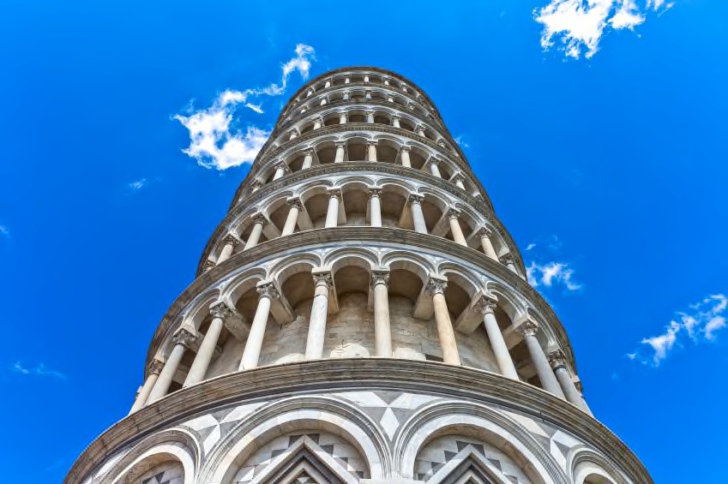
wasn’t exactly a prime candidate for a project like solidifying the Leaning Tower of Pisa on paper. Burland admits that soil mechanics, the area of engineering that played a pivotal role in the stabilizing of the tower, was his worst subject during his undergraduate studies at University of the Witwatersrand, Johannesburg. He ultimately overcame his aversion to this subject to become a professor at Imperial College London (and saved the Leaning Tower of Pisa from complete collapse, of course).
6. THE TOWER COULD STILL RESUME TILTING.
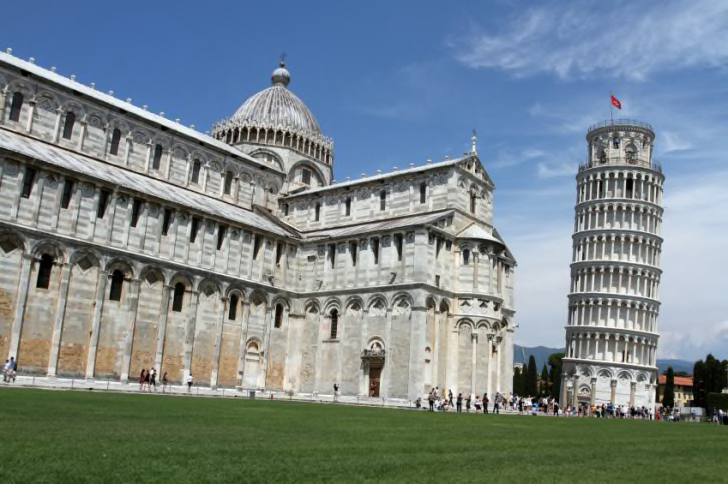
Barring additional efforts to prevent future leaning, the tower is predicted to remain stable only for the next 200 years. If everything else remains constant, the ground should begin giving way again in the early 23rd century, allowing for the tilt to slowly resume.
7. THE LEANING TOWER OF PISA IS JUST ONE OF SEVERAL LEANING TOWERS IN PISA.
A number of other Pisani structures suffer foundational instability thanks to the river city’s soft grounds. Among these are San Nicola, a 12th century church located about half a mile south of the Leaning Tower of Pisa, and San Michele degli Scalzi, an 11th century church about two miles east of the pair. While San Nicola, whose base is rooted beneath the earth, leans only mildly, San Michele degli Scalzi boasts a substantial 5-degree tilt.
8. OTHER TOWERS HAVE CHALLENGED ITS FAMED LEAN.
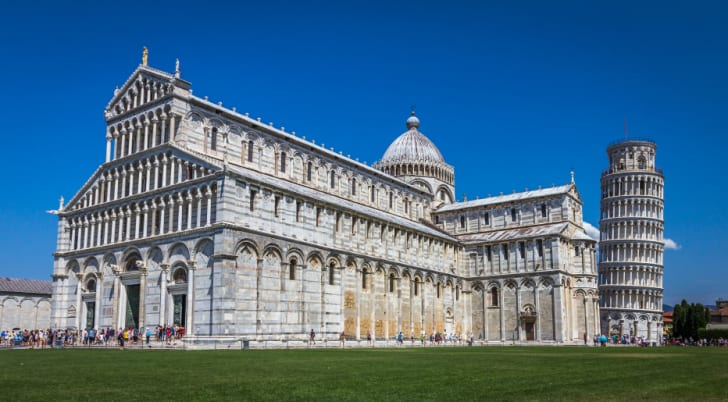
No building on Earth is more famous for its diagonal posture than the Leaning Tower of Pisa, but several others have challenged its superlative slant. In 2009, the Leaning Tower of Surhuusen, a German steeple erected between the 14th and 15th centuries, officially “out-leaned” its Pisani rival—Guinness record keepers calculated that the Surhuusen tower’s tilt extended a full 1.2 degrees further than that of Pisa’s, which had been modified from its pre-1990s peak of 5.5 degrees to a less-drastic 3.97 degrees. Another German tower, the town of Bad Frankenhausen’s 14th century church Oberkirche, and the shorter of the Two Towers of Bologna have also bested the Pisa tower with 4.8-degree and 4-degree leans, respectively.
9. MUSSOLINI TRIED TO FIX THE TOWER. HE ONLY MADE IT WORSE.
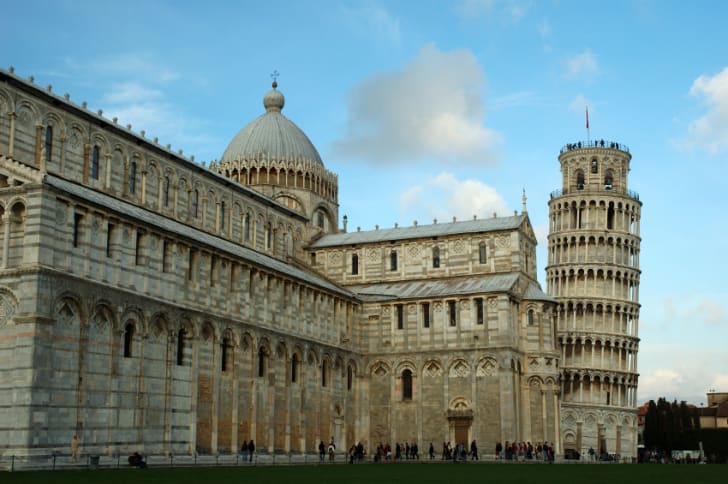
In 1934, Italian dictator Benito Mussolini declared the crooked attraction was a pockmark on his nation’s reputation and allocated resources for straightening the building. Mussolini’s men drilled hundreds of holes into the tower’s foundation and pumped in tons of grout in a misguided effort to rectify its tilt. Instead, the heavy cement caused the base of the tower to sink deeper into the soil, resulting in an even more severe lean.
10. THE TOWER WAS A MILITARY BASE DURING WORLD WAR II.
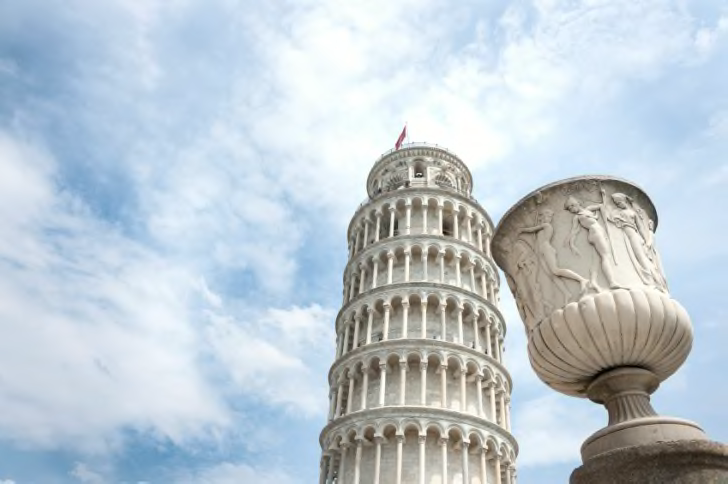
Even though the tower’s distinctive silhouette would seem to make it an easy target, the German army felt it was a prime lookout point during World War II because the tall tower provided optimal surveillance over the surrounding flat terrain.
11. AMERICAN TROOPS DECIDED NOT TO DESTROY THE TOWER.

The German use of the tower nearly succeeded where gravity has failed in bringing the tower down. When the advancing U.S. Army was charged with demolishing all enemy buildings and resources in 1944, soldiers were too spellbound by the iconic tower’s aesthetic charms to call in artillery to bring it down. As detailed by veteran Leon Weckstein in a 2000 interview with The Guardian, the American troops braving the terrains of Axis-occupied Pisa were so entranced by the sight of the Leaning Tower that they couldn’t call for the volley of fire. Weckstein recalls preparing to attack the Nazi base before ultimately retreating and leaving the beautiful tower intact.
12. GALILEO MAY NOT HAVE DROPPED A CANNONBALL FROM THE TOP.
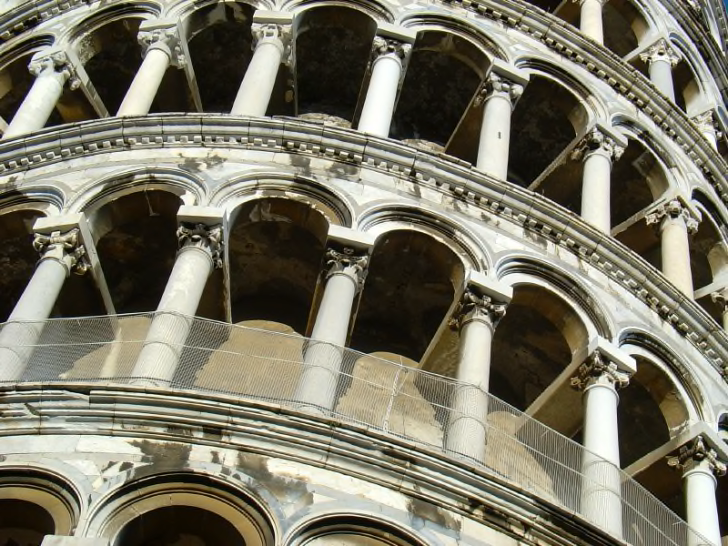
Among Renaissance physicist Galileo Galilei’s most famous achievements was the discovery that gravity’s effect on an object is the same regardless of its mass. This epiphany is said to have hit Galileo atop the Leaning Tower of Pisa, from where he allegedly dropped a cannonball and a musket ball in 1589. The scientist’s biography, penned by disciple Vincenzo Viviani, remains the sole official assertion that such an experiment took place.
Modern scholars like Paolo Palmieri and James Robert Brown argue that the Leaning Tower of Pisa test existed only as a thought experiment of Galileo’sdevised perhaps at a much later chapter in his life and was never carried out but was inflated by Viviani to buff the grandeur of Galileo’s discovery.
13. A ROCK DOME IN ANTARCTICA IS NAMED AFTER THE TOWER.
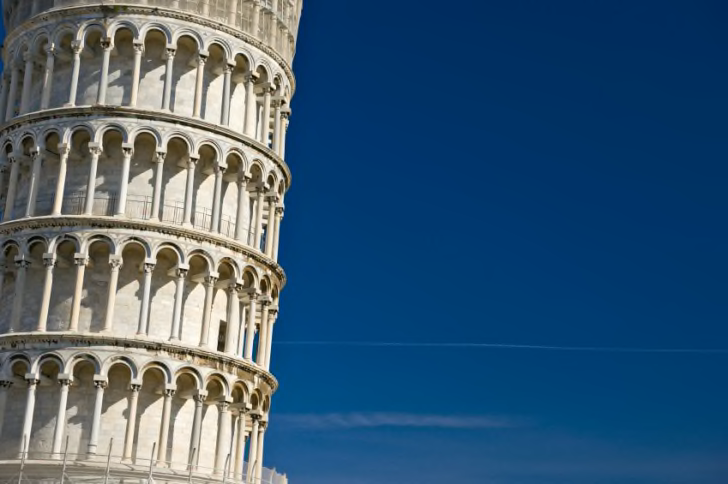
Despite having been discovered by the French Antarctic Expedition, a particularly hefty rock dome in the seventh continent’s Geologie Archipelago is named for Italy’s prized tower. The 27-meter-long formation, first documented on Rostand Island in 1951, goes by the nickname of “Tour de Pise” thanks to its resemblance to the building.

